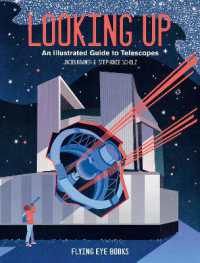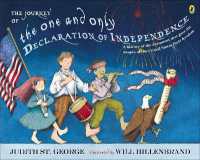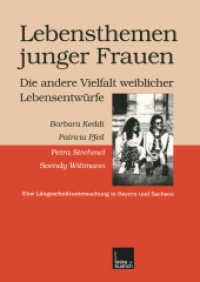Full Description
'Gives us an inside view of what children should experience in the primary grades and shows us how we can build them up to new experiences in the intermediate grades. A great resource for vertical team collaborations, teachers who are transitioning from teaching primary to intermediate grades or vice versa, teachers in multiage classrooms, and teacher education classes'-Helena Stevens, Intermediate Literacy Coach Ricardo Richards Elementary School, Kingshill, Virgin Islands'Full of practical, everyday ideas to implement immediately. Offers true student examples that teachers see and experience daily'-Scott Kovatch,Principal Horizon Elementary School, Granger, USAHow can teachers help their primary students become competent intermediate readers and writers?Supporting students as they advance from beginning to intermediate literacy levels poses a unique challenge for teachers. In Building Bridges From Early to Intermediate Literacy, Grades 2-4, Sarah F. Mahurt, Ruth E. Metcalfe, and Margaret A. Gwyther show how teachers can meet the instructional needs of students in transition from one level to the next. The authors offer practical guidance and classroom-tested strategies that demonstrate how thoughtful instruction can help each student reach new levels of competency in reading and writing.This invaluable resource shows teachers how to examine and refine their instructional practices to more effectively meet the needs of all the students in their classrooms, whether they are struggling readers or advanced learners. Educators will find:- Specialized assessment tools andinstructional strategies for word study,reading, and writing- Detailed examples of reading and writing instruction - Methods for integrating language artswith science and social studies- Charts to track students' progress- A teacher's reflection section at the endof each chapterWritten by experienced literacy educators, this accessible text helps ensure that all students confidently cross the bridge from the primary to the intermediate grades.
Contents
List of FiguresForewordPrefaceAcknowledgmentsAbout the Authors1. IntroductionTeaching for IndependenceTeaching for Strategic ActionStruggling Readers and English Language LearnersHow Children Grow as Readers and WritersLiteracy Instruction During TransitionReflection2. AssessmentGetting StartedWord StudyReadingWritingAnecdotal NotesRunning RecordsConference NotesUsing AssessmentFinding TimeReflection3. Word StudyLearning About WordsPhonological and Phonemic AwarenessPhonicsStructural AnalysisHigh-Frequency WordsVocabularyWord Walls and ChartsLinking to the Real Work of Reading and WritingReflection4. ReadingGetting to Know a Reader in TransitionDeveloping StaminaChanges in Work StationsGradually Decreasing Small-Group Guided ReadingUsing Reading Mini LessonsTeaching Children How to Choose BooksLiterature CirclesStrengthening ComprehensionShared Reading for Comprehension and FluencyShifting Responses to TextWriting More Developed Responses to ReadingSharing TimeReflections5. WritingMaking Instructional DecisionsModeled WritingShared WritingInteractive WritingWriting WorkshopMini LessonsIndependent Writing and ConferringSharingReflection6. Pulling It All TogetherIntegrating Within the Language ArtsIntegrating Language Arts With Science and Social StudiesPlanning the Nonfiction ProjectPreparing for the Nonfiction ProjectLiteracy Lessons on NonfictionReflectionAfterwordReferencesIndex







